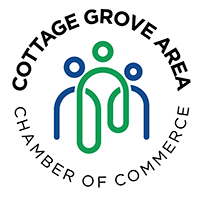Running a small business in 2025 means navigating constant change — with fewer hands and tighter budgets. Thankfully, modern software tools are designed to help entrepreneurs automate routine work, stay organized, and make smarter decisions. From invoicing to customer care, technology now does the heavy lifting so teams can focus on what matters most: growth.
Recent insights on AI adoption by entrepreneurs show that small business owners increasingly turn to automation to bridge resource gaps and improve efficiency. The right digital stack can turn a lean operation into a highly coordinated ecosystem — where every process, file, and interaction syncs seamlessly.
The Core Categories of Modern Business Tools
Below is a breakdown of key tool types that empower small business efficiency today.
|
Category |
Purpose |
Operational Benefit |
Example Tool |
|
Project Management |
Task scheduling, tracking, and team collaboration |
Keeps projects on schedule with shared visibility |
|
|
CRM Systems |
Centralizes contacts, leads, and follow-ups |
Improves customer retention and sales forecasting |
|
|
Accounting & Invoicing |
Handles billing, reporting, and tax prep |
Reduces errors and simplifies compliance |
|
|
Marketing Automation |
Runs campaigns and email sequences |
Expands audience reach without extra staff |
|
|
File Management |
Stores, syncs, and shares documents securely |
Enables remote access and version control |
Each of these tools replaces outdated manual systems, ensuring that businesses operate with greater clarity and fewer interruptions.
Creating a Connected Workflow
Modern efficiency isn’t about using dozens of apps — it’s about making them work together. A connected workflow means data moves smoothly between systems:
-
CRM updates automatically feed into marketing campaigns.
-
Project management timelines link directly to invoices and expense reports.
-
Files shared in one tool are automatically stored or backed up elsewhere.
Integration platforms like Zapier help connect apps without code, allowing even non-technical founders to automate tasks across multiple systems — saving hours every week.
The Rise of Intelligent Automation
Artificial intelligence has moved from “nice-to-have” to “must-have.” Small teams now deploy AI for:
-
Forecasting: Predicting cash flow and demand.
-
Customer Support: Using chatbots to answer FAQs.
-
Marketing: Generating ad copy or blog posts.
-
Decision Support: Turning raw data into actionable insights.
For example, teams using Grammarly to refine communications or Jasper for content generation are accelerating workflows once reserved for enterprise teams. These AI companions quietly remove bottlenecks — helping small businesses punch far above their weight.
Efficiency Audit Checklist
Use this list to assess how streamlined your current operations are:
CRM integrates with your communication channels
Accounting is automated (invoicing, payroll, reporting)
Projects are tracked in one central system
Marketing campaigns run on automation triggers
Files are cloud-stored and version-controlled
AI tools assist with at least one daily workflow
If you checked fewer than four boxes, it’s time to reexamine your setup and introduce automation where it’s most needed.
The Power of Integration in Action
When operational tools work together, efficiency compounds.
For instance, connecting project management platforms like Trello with accounting systems such as QuickBooks can streamline project tracking, billing, and reporting in one cohesive workflow.
The outcome isn’t just saved time — it’s fewer administrative errors, faster delivery cycles, and clearer oversight across teams.
Rather than hiring additional staff, small businesses often find that integrating their existing tools creates a digital backbone that supports sustainable growth and scalability.
Complementary Tools Worth Exploring
For small businesses ready to level up further, explore these additional time-savers:
-
Calendly for effortless client scheduling
-
Notion for centralizing notes, databases, and team wikis
-
Slack for organized team communication
-
Canva for fast, on-brand design creation
-
Hootsuite for automated social media publishing
Each plays a different role — but all reinforce the same outcome: operational flow with minimal friction.
FAQ: Modern Tools for Small Business Operations
Q1. What tool should I start with first?
Start with a CRM like HubSpot or Zoho to centralize customer data. It becomes the foundation for sales, service, and marketing automation.
Q2. Can small businesses afford automation tools?
Yes. Most leading tools offer free or low-tier plans — for instance, Asana and Trello both have free versions that scale as your business grows.
Q3. How do I know if I’m using too many tools?
If you’re entering the same data in multiple places, you’ve gone too far. Simplify using integration connectors or an all-in-one platform.
Q4. Are AI tools secure for small business use?
Modern AI tools follow strict compliance and encryption standards, but always check the vendor’s privacy and data policy.
Q5. What’s the best way to evaluate ROI from a tool?
Track time saved, error reduction, and customer response time improvements. Set a quarterly benchmark to measure tangible gains.
The Future of Small Business Operations
The next wave of business tools will blend AI, automation, and interoperability. Instead of juggling software suites, entrepreneurs will manage smart ecosystems where every function — from accounting to customer service — syncs automatically through shared data and machine learning.
Soon, even small businesses will operate with the precision of enterprise-grade systems — powered by automation that runs quietly in the background.
Efficiency isn’t about adding more apps — it’s about choosing the right ones and making them work in unison.
By embracing connected, intelligent tools, small businesses can scale sustainably, save time, and refocus their energy where it counts most: building relationships and growing revenue.
Streamline. Automate. Integrate. Then innovate — with clarity, not clutter.
Discover how the Cottage Grove Chamber of Commerce can help your business and community flourish by connecting you with local resources and opportunities!


